There we go, I was at GPN21 the previous weekend and gave a talk about flying in the virtual worlds. The Video Operation Center has been quick and the recording is now online for general consumption. As it was a mostly German event, I decided to give the talk in German. Sorry about that but I guess some of you do speak the language.
Tag: flightsim
Reality Bites – Flight Simulation – Part 11 – Giving A Talk at GPN21 This Week
While I’m certainly still considering myself a newbie at flight simulation, I’ve accumulated a number of interesting stories about the topic over the last year on how to get started. So I thought I’d talk a bit about it at the upcoming ‘Gulaschprogrammiernacht’ (GPN21) in Karlsruhe this weekend. Yes, it’s not quite like any other topic I’ve talked about over the years, but I like the challenge. GPN21 is mostly a German speaking event, so most talks, including mine, will be held in German. If you can’t make it to Karlsruhe, talks will be streamed live and will be recorded for later consumption. My talk is scheduled on Saturday, 10. June 2023 at 11.10 am.
Reality Bites – Flight Simulation – Part 10 – Moving to ‘the Bus’
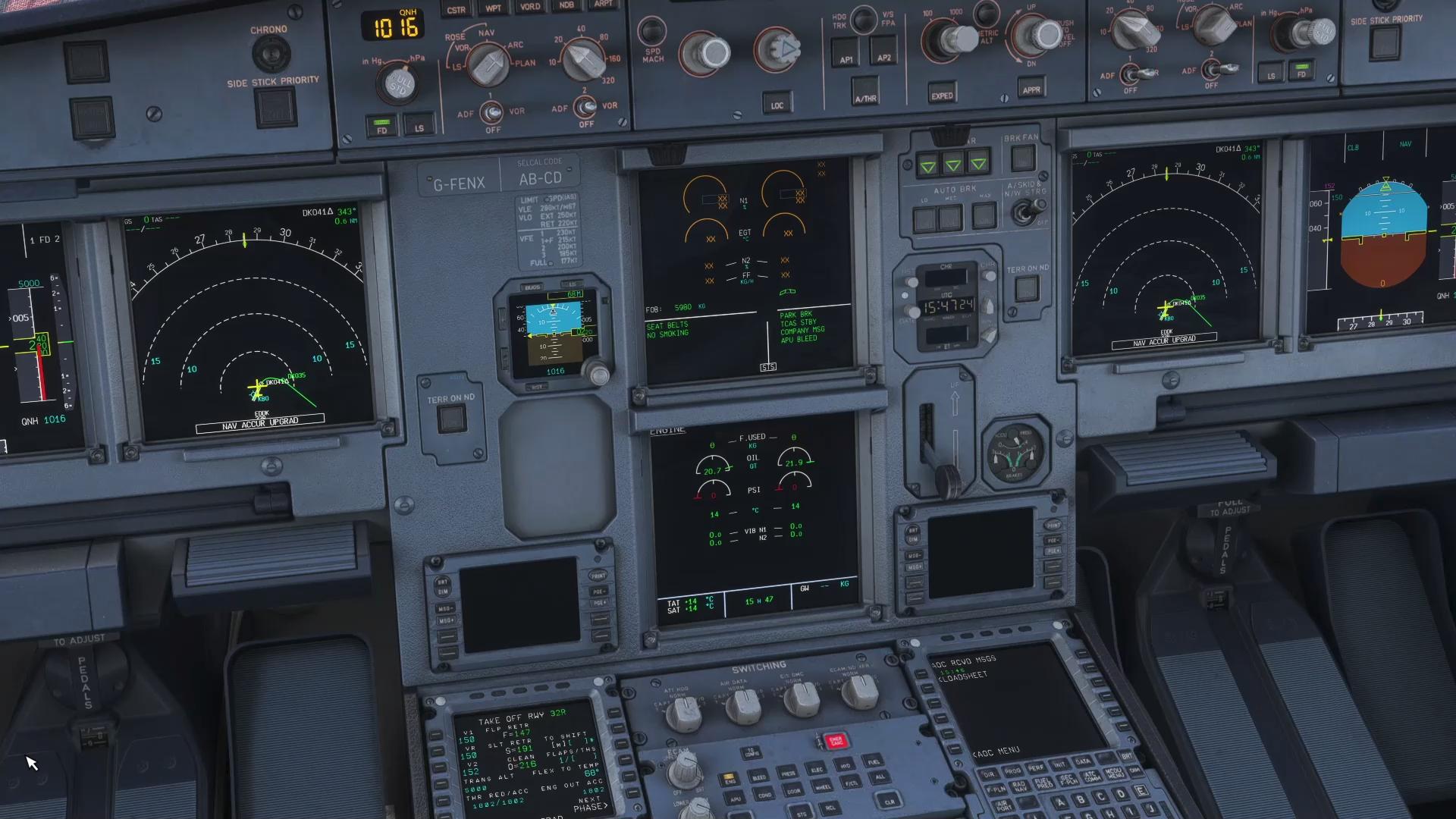
It was predictable in some way that sooner or later, I would want to do yet another ‘upgrade’ in the flight simulator and move to something bigger. After the turboprop Daher TBM-930, which I started flying last year, it was either a private yet or an airliner. There is lots of choice and in the end, I decided to go for an airliner. The big choice to make at this point then is: Airbus or Boeing!? In the end, I decided to go for an Airbus A320 and here again, there are several implementations to choose from: In the Asobo / MS flight simulator, one can choose the A320 that comes with the simulator itself, the open source FlyByWire A320neo or the closed source and not for free Fenix A320ceo. After some investigation, I came to the conclusion that I’d skip the default A320 and go straight for something with more ‘system depth’. Both the FlyByWire and the Fenix A320 seem to be fantastic products and, contrary to my open source nature, I decided to go for the Fenix A320 first. At 50 British pounds, it is very affordable and is said to have an unrivaled system depth, i.e. pretty much everything the real plane does works in the simulator as well. I have no idea how that could be done for 50 GBP, but I was eager to find out.
Continue reading Reality Bites – Flight Simulation – Part 10 – Moving to ‘the Bus’Reality Bites – Flight Simulation – Part 9 – Satellite Communication in Planes
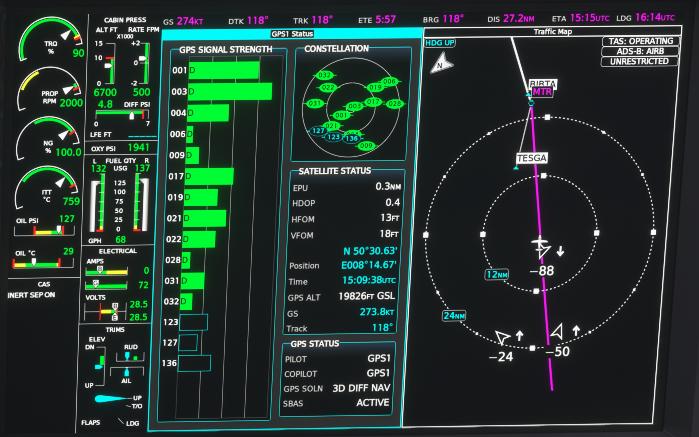
There obviously had to come a time when the interests of the wireless network engineer in me and my enthusiasm for flying in the simulator cross paths. Even small general aviation aircraft have lots of radios on board these days and if you go up the price range a bit, there are even built-in satellite communication options available. And when moving up the scale to airliners, satellite communication for voice calls and data exchange is a standard feature. So let’s have a look at these capabilities.
Continue reading Reality Bites – Flight Simulation – Part 9 – Satellite Communication in PlanesReality Bites – Flight Simulation – Part 8 – Radios In Planes
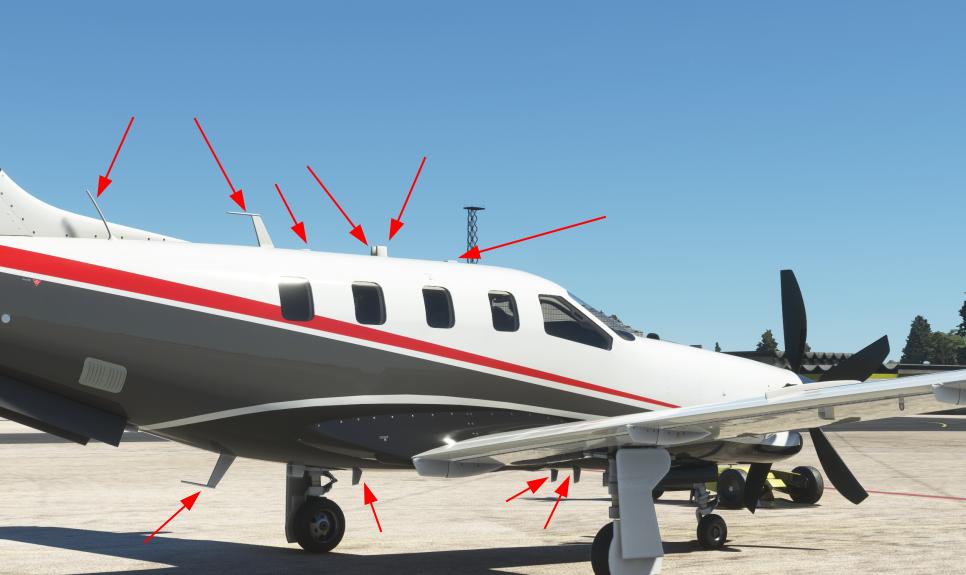
When flying in the simulator, I’m quite amazed how many radios a modern GA airplane or airliner has on board. Sometimes, it feels more like a flying radio tower than an airplane. The picture above and below shows the antennas of a Daher TBM 930 turbo-prop plane on its roof and its underside. Needless to say that all radio systems are not only used in reality, but also in the simulation, particularly when flying on Vatsim. So what are all those antennas for?
Continue reading Reality Bites – Flight Simulation – Part 8 – Radios In PlanesReality Bites – Flight Simulation – Part 7 – SimBrief and Navigraph
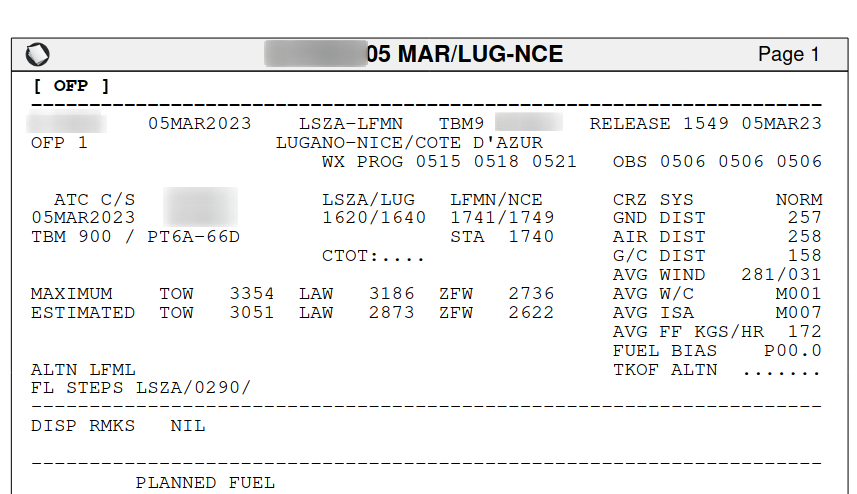
When flying with Visual Flight Rules (VFR) in the simulator, I’ve come to rely on SkyDemon, a real world tool to plan VFR flights and then use it during the virtual flight to find my way and to avoid ‘Charlie’ airspace and restricted areas. When flying with Instrument Flight Rules (IFR), other real life tools such as ForeFlight are an interesting option to use in the simulator. However, ‘the Internet’ seems to conclude that the combination of SimBrief and Navigraph for flight planning and flying is a better alternative for the simulator. I was a bit skeptical at first, because I want my simulator flying as close as possible to the real world, but I gave it a try anyway. So here’s how that went:
Continue reading Reality Bites – Flight Simulation – Part 7 – SimBrief and NavigraphReality Bites, Part 6: The G3000 Avionics on Steroids in That Simulator
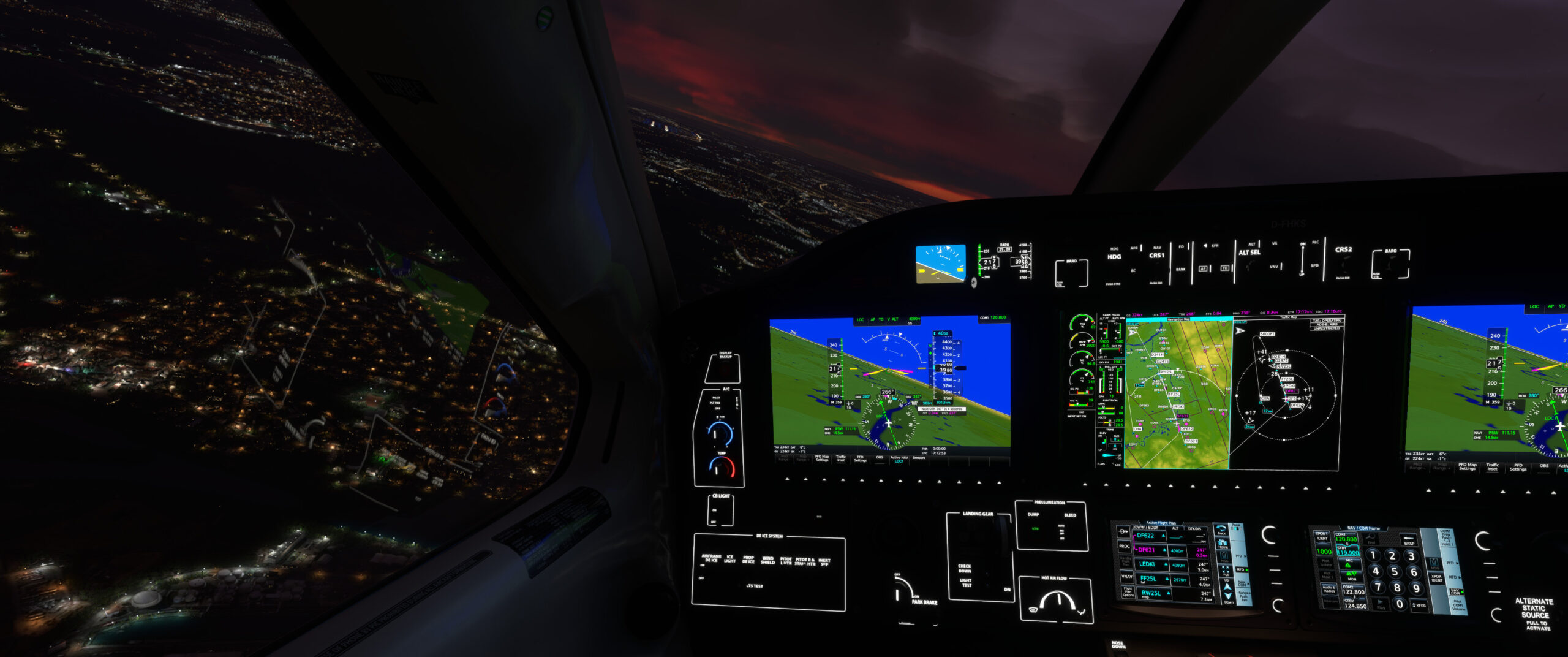
In the previous post back in January on my flight simulator adventures, I’ve described my step from a small propeller plane to the somewhat more powerful turbocharged Daher TBM 930. While that doesn’t give a lot of benefits from a Visual Flight Rules (VFR) perspective, having a faster plane for Instrument Flight Rules (IFR) flying is a great thing, as it offers additional range and hence, more controlled airports to fly into. This is particularly helpful when flying in the Vatsim environment, where ‘real virtual’ air traffic controllers keep you save in the sky, but only cover select larger airports. The catch so far: The Garmin G3000 flight management system (FMS) has lacked a number of important features so far, which made IFR flying quite a bit more challenging, particularly in high workload situations. So I was really delighted that in the update in January 2003, the G3000 avionics got a major overhaul. Let’s have a look at that.
Continue reading Reality Bites, Part 6: The G3000 Avionics on Steroids in That SimulatorReality Bites – Flight Simulation – Part 5 – Moving to the Next Plane
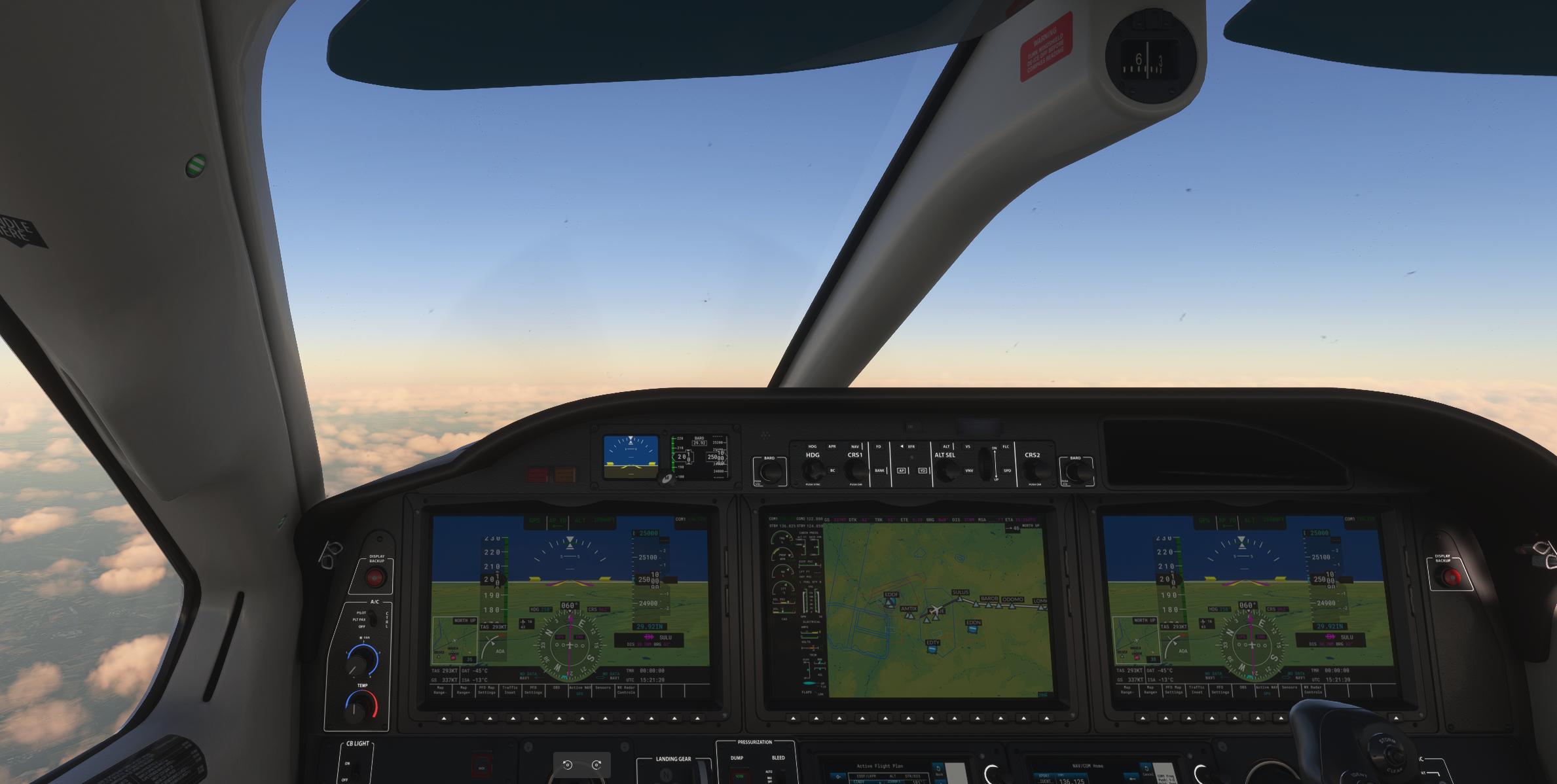
I’ve been virtually flying on VATSIM for some time now, and the small Diamond DA40 is great fun, especially for Visual Flight Rules (VFR) operation. With its Garmin G1000 flight management system, flying Instrument Flight Rules (IFR) to and from larger airports is also a lot of fun, especially since the software was updated to the “NXi” version in the simulator last year, which supports pretty much the whole range of IFR procedures. It’s also fun to be the ‘odd-duck’ in the traffic flow, as the DA40 is obviously much slower than airliners, which has air traffic controllers sweating a bit to squeeze me into an approach queue on a Friday evening. The downside: Due to the relatively low speed of the DA40, the number of airports to fly to and from in VATSIM is limited by the time it requires to fly between them. So the obvious ‘next step’ was get into a somewhat faster plane.
Continue reading Reality Bites – Flight Simulation – Part 5 – Moving to the Next PlaneReality Bites – Flight Simulation – Part 4 – VATSIM
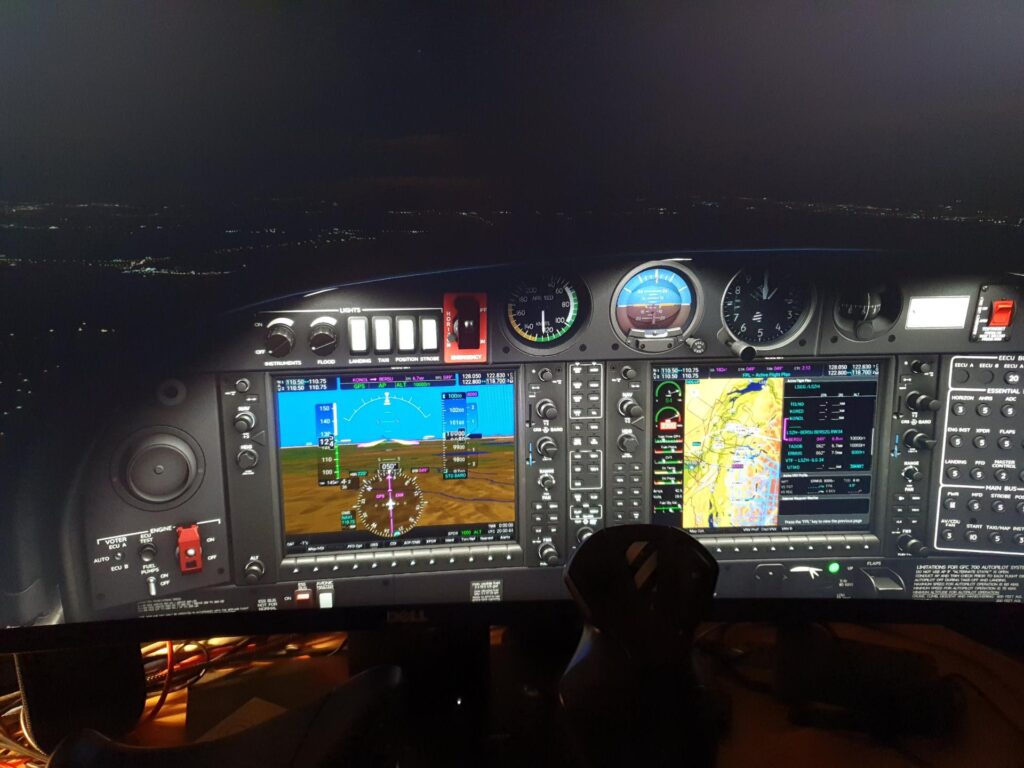
In episode 3, I’ve looked a bit on how flight planning and navigation software for ‘the real world’ can be used in a flight simulator. Using such software is a huge step beyond the built-in navigation tools when it comes to flying in the simulator as realistically as possible. Next in my list of things to improve was radio communication with Air Traffic Control (ATC). MS Flight Simulator 2020 has built in Air Traffic Control, and interaction with it is done by selecting pre-formulated requests and answers from a drop down menu. That’s not very realistic and lightyears away from the challenge of talking to real people at the other end of a radio channel. But there’s a fix for that: VATSIM.
Continue reading Reality Bites – Flight Simulation – Part 4 – VATSIMReality Bites – Flight Simulation – Part 3 – Real World Apps in the Simulator
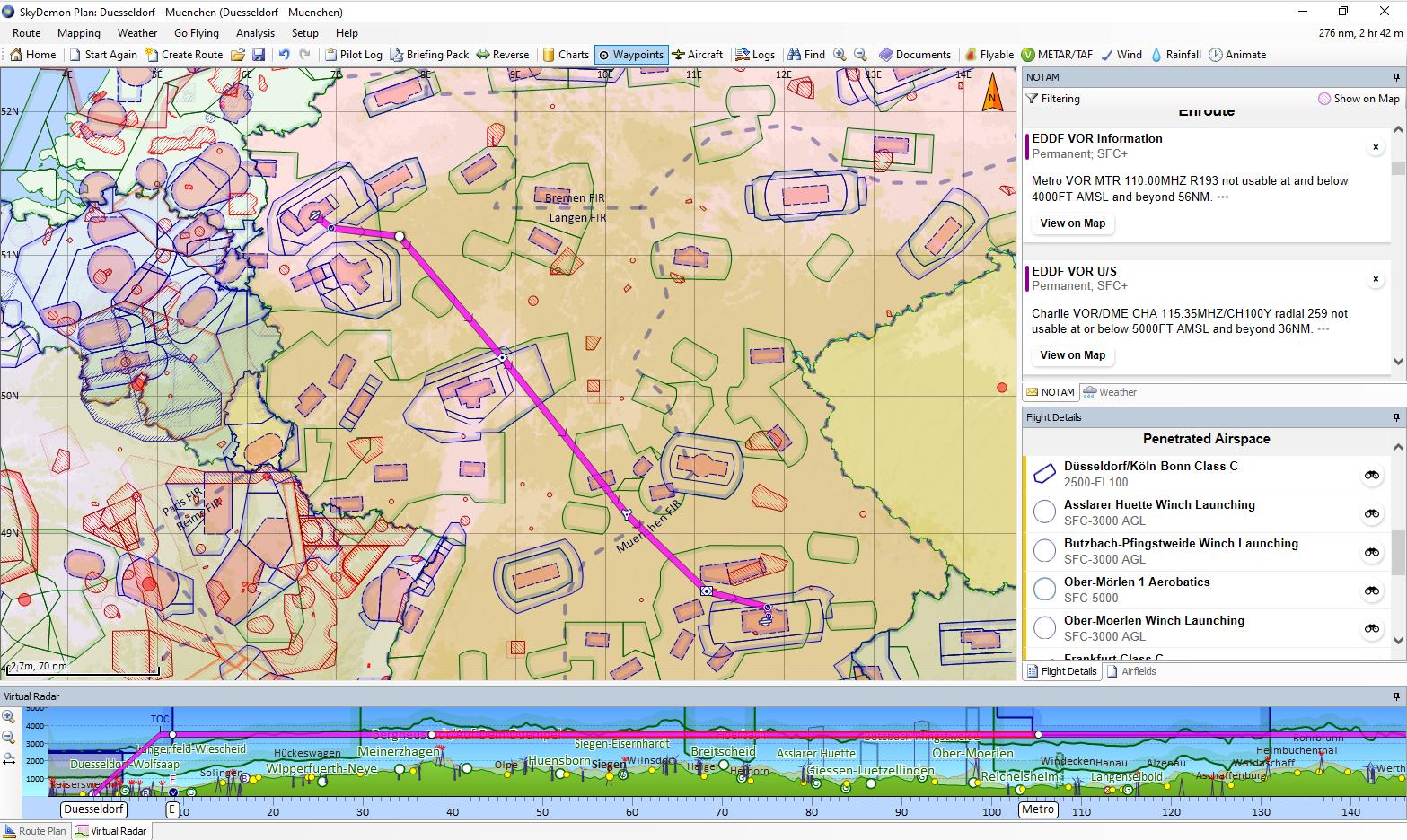
In part 2 of this series, I’ve been looking at resources available from books to videos on Youtube to learn flying in the virtual domain. For me, a mix of real world examples and examples shown with a simulator made most sense. So for a couple of months I was flying happily on the simulator on the X-Box and picked up some interesting apps along the way that people use for flight preparation and during flight in the real world. As my goal is to fly as realistically in the simulator as possible, I had to change tactics a bit to also use those tools in the virtual world.
Continue reading Reality Bites – Flight Simulation – Part 3 – Real World Apps in the Simulator